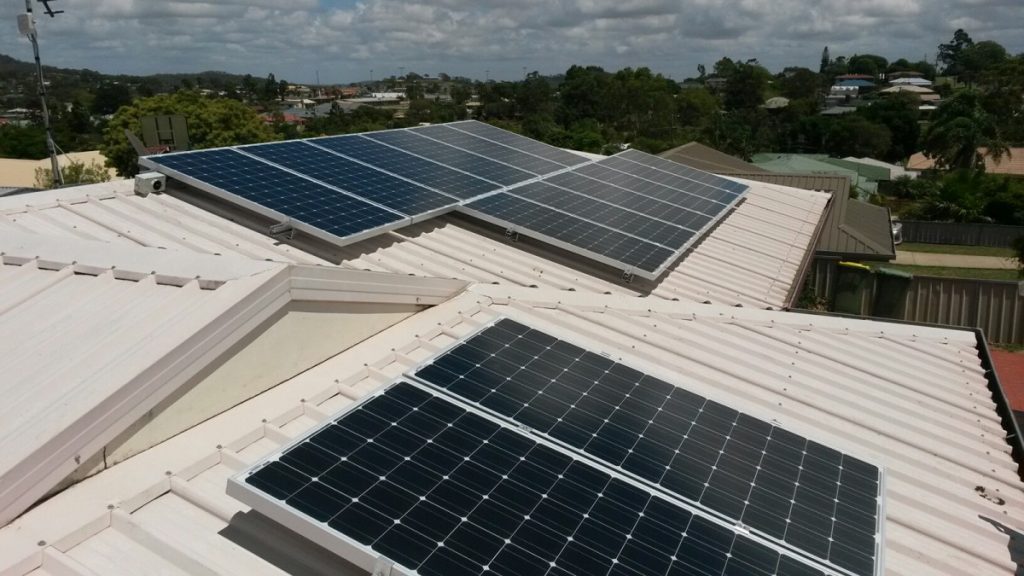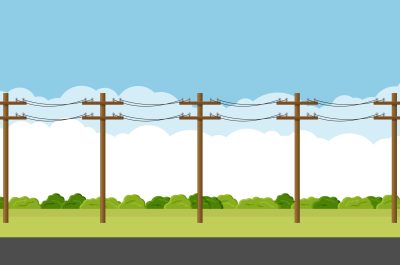Is too much solar to blame for voltage issues?
Australia’s very high levels of solar PV penetration are not the only reason for voltage to be sitting towards high end of the voltage band. There are many other reasons why voltages vary, including differing feeder lengths and distribution transformer tap settings, for example.
What is the typical variation of voltage across a network throughout the day and night?
Voltage is a bit like pressure in a water pipe. It’s not surprising that voltage/pressure varies across different parts of the network. One of the key questions raised in recent media on this issue has been in regard to variations in voltage across a 24-hour period. This variation is not standard across the system and can be dependent on the individual feeder and whether the area in question is heavily residential, commercial or industrial.
Distribution network companies design their networks to cater for all scenarios not just across a single 24 hour period, but across the whole year:
- no load (such as residential at night),
- peak load (which in residential areas is usually at 6-8pm on very hot summer days), and
- solar export (reverse electricity flow peaking in the middle of a mild but sunny summer day).
The voltage at an individual house depends on their distance from the distribution substation or pole top transformer. Customers close to the substation or transformer will be supplied with voltages at the higher end of the allowable range to ensure customers further away can be supplied with voltage above the minimum allowed voltage – especially at peak times.

Networks are acutely aware of these issues and are taking significant actions to manage customers’ voltage, however, there are challenges. It is a priority for networks to keep pace with the increasing numbers of solar homeowners wanting to connect and export surplus energy back into the grid, but some of these customers are finding their inverters cut out due to higher voltages. Networks are being asked to rectify the situation, but it is difficult to manage the voltage variations caused by solar PV export and at the same time cater for high demand at non-export peak times. Our 20th century one-way grid is expected to be all things to all customers, but it simply wasn’t built for large amounts of two-way power flows we are now seeing in some areas.
In locations where solar PV penetration levels are high, careful planning is undertaken and every connection request is carefully considered to take into account current network capacity limitations. In a small number of cases, limit exports on customer inverters are needed to ensure voltage variation remains within regulatory limits (i.e. the nominal voltage for Australian households is 230 volts, but because voltage fluctuates all the time there is an allowance for +10% and -6%).
To complicate matters further, some solar installations are exporting more than their inverter size (without agreement), which increases voltage rise within the network. There are also many thousands of solar PV connections that were installed before smart inverters were mandated and therefore do not comply with the Australian Standard AS4777. Network companies are investigating ways to deal with these challenges to improve quality assurance practices in the future by reviewing customer connections once they are built, and also trying to identify dodgy connections and manage electricity exported into networks from private solar generators through smart meter data.
Distribution network companies across Australia are working closely with each other and key stakeholders to investigate and trial new technologies in order to regulate voltage.
How are networks dealing with sustained over-voltages due to excess solar penetration?
When total customer connections on any particular feeder exceed the limit (total power) of the transformer, the traditional solution has been to upgrade the transformer.
However, as we confront increasing solar PV connections across the system, this is a costly solution that is ultimately paid for by all customers, not just those with renewables connecting to the grid.
Smarter solutions are required, options include.
- Managing export limits – to ensure that voltage is managed when new connection applications are considered, networks undertake voltage impact assessments as part of the application process. In a small number of cases, limit exports are placed on customer inverters in order to ensure voltage variation remains within accepted limits to ensure a good quality of electricity supply.
- Network sensing and monitoring – Networks have been applying to the Australian Energy Regulator to obtain approval to fund technology investment to provide better visibility of the distribution system and tools that would make it easier for customers to export solar and use batteries, removing constraints where possible. This includes the possible installation of extra voltage controllers, sensors and systems to forecast and manage the low voltage network.
- Smart meters – smart meters allow networks to build an analytics platform to investigate and respond to supply quality issues that may be caused by high penetration of solar on the low voltage network. While these have been rolled out to all customers in Victoria, accelerated roll out is needed in other jurisdictions.
- Innovation – Networks are undertaking a number of initiatives to better understand and plan for the expected growth in penetration of solar PV in the future using analytics, trials, and smart inverters.
- Forecasting and planning – Networks conduct regular assessments to forecast potential growth of solar systems in certain locations and plan accordingly to ensure they deliver reliable power to households and businesses.
- Voltage management – In areas where networks have identified voltage issues related to high penetration of solar PVs, networks try to adjust their voltage settings as much as currently practicable to manage the issue and enable the absorption of substantially greater amounts of solar capacity.
Open Energy Networks, Energy Networks Australia’s joint project with the Australian Energy Market Operator (AEMO), is taking a lead role in this adaption by redesigning the management of distributed energy resources (solar and storage devices). To better manage voltage issues and integrate increasing levels of solar and storage into the system, the electricity distribution network will need to be coordinated and optimised across the wider energy system – and Open Energy Networks is examining how best to do this.
Click here for more information about Open Energy Networks.



